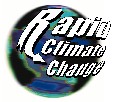Dataset Collection
RAPID The Mass balance and freshwater contribution of the Greenland ice sheet: Numerical model and observational data
Abstract
"The Mass balance and freshwater contribution of the Greenland ice sheet: a combined modelling and observational approach" project, which was a Natural Environment Research Council (NERC) RAPID Climate Change Research Programme project (Joint International Round - NE/C51631X/1 - Duration 1 Jun 2005 - 30 Nov 2008) led Prof Jonathan Bamber of the University of Bristol, with co-investigators at the Nansen Environmental & Remote Sensing Center, Norway, the Royal Netherlands Meteorology Institute and Dr MR van den Broeke, University of Utrecht, Netherlands.
The dataset quantifies how, where and when the Greenland ice sheet has fed fresh water through iceberg calving, subglacial melting and meltwater runoff into the surrounding ocean during the last half century.
This dataset collection contains precipitation, evaporation and run off model outputs.
The thermohaline circulation is a global ocean circulation, driven by differences in the density of the sea water that is controlled by temperature (thermal) and salinity (haline). In the north Atlantic, the thermohaline circulation transports warm and salty water to the north, where it, together with the North Atlantic Drift (the north-eastern most extension of the Gulfstream), contributes to the warm sea surface along the coast of western Europe and to the relatively mild European winters. From ice cores drilled in Greenland, there is evidence that rapid climate changes took place during the last glacial (the period roughly from 100,000 to 20,000 years before present): over a period of just several decades, northern European winter temperature dropped by as much as 10 degrees for periods typically lasting 1000 years. The present explanation is that large, pulse-like freshwater fluxes (probably from icebergs that originated from the continental ice sheets) were released into the north Atlantic where they weakened or shut down the thermohaline circulation. In a warmer greenhouse climate, it is also likely that the freshwater flux into the north Atlantic will increase; using a scenario of doubling CO2 within the next 70 years, most atmospheric models predict an increase in precipitation in high latitudes. One of the great uncertainties in these projections is the role of the Greenland ice sheet, which is situated in the middle of the area of interest. We know so little about the variability in its meltwater production and its sensitivity to regional warming that its contribution to the problem of the north Atlantic thermohaline circulation is often ignored, in spite of the fact that the Greenland ice sheet contains enough water to rise global sea level by 6 m! In this proposed research we quantifyed in detail how, where and when the Greenland ice sheet has fed fresh water through iceberg calving, subglacial melting and meltwater runoff into the surrounding ocean during the last half century. The melting and runoff was calculated using a coupled snow - atmosphere model that is run over Greenland at very high resolution (11 km in the horizontal), which took about 1 year on a supercomputer to run!
Rapid Climate Change (RAPID) was a £20 million, six-year (2001-2007) programme for the Natural Environment Research Council. The programme aimed to improve the ability to quantify the probability and magnitude of future rapid change in climate, with a main (but not exclusive) focus on the role of the Atlantic Ocean's Thermohaline Circulation.
Details
| Previous Info: | No news update for this record |
|---|---|
| Previously used record identifiers: |
http://badc.nerc.ac.uk/view/badc.nerc.ac.uk__ATOM__dataent_12282371171827067
|
Related Documents
| RAPID Science plan |
| Rapid Models |
| Rapid brochure |
Temporal Range
1958-01-01T00:00:00
2008-12-31T23:59:59
Geographic Extent
90.0000° |
||
-180.0000° |
180.0000° |
|
-90.0000° |

